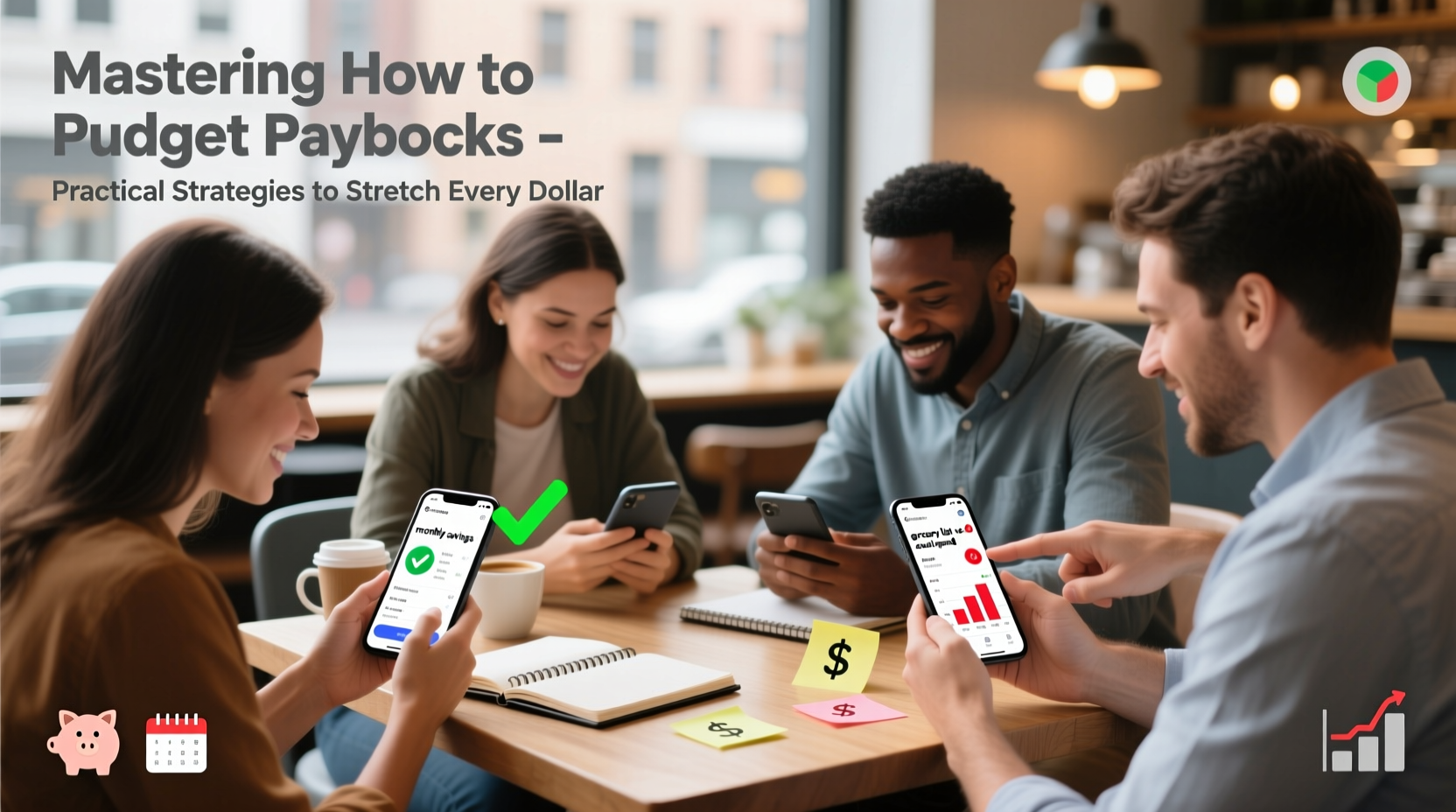Budgeting isn't about restriction—it's about intention. When you master how to budget paychecks effectively, you gain control over your finances, reduce stress, and create space for what truly matters. Whether you're living paycheck to paycheck or looking to optimize a higher income, stretching every dollar starts with smart planning and consistent habits. This guide delivers actionable strategies grounded in real-world experience and financial expertise to help you make the most of every earnings cycle.
Understand Your Net Income and Spending Patterns

The foundation of effective paycheck budgeting is clarity. Many people focus on gross income, but it’s your net pay—what actually hits your bank account—that determines your spending power. Start by reviewing your last three pay stubs to calculate your average take-home pay after taxes, retirement contributions, health insurance, and other deductions.
Next, track your spending for at least one full month. Categorize expenses into fixed (rent, car payments, subscriptions) and variable (groceries, dining out, entertainment). Use bank statements or budgeting apps to identify patterns. You might be surprised how much leaks away on small, recurring charges like app subscriptions or convenience purchases.
Adopt a Proactive Paycheck Allocation Strategy
Instead of reacting to bills as they come due, allocate your paycheck the moment it arrives. One proven method is the 50/30/20 rule: 50% for needs, 30% for wants, and 20% for savings and debt repayment. While helpful, this model may need adjustment based on your location and cost of living.
A more flexible approach is zero-based budgeting—assigning every dollar a job. For example, if you earn $3,000 per month, ensure all $3,000 are allocated to specific categories, leaving no unassigned funds. This prevents unintentional overspending and increases accountability.
“People who budget their paychecks before spending tend to save 2.3 times more than those who don’t.” — National Financial Educators Council
Step-by-Step: How to Allocate a Paycheck in 5 Minutes
- Confirm your net income from the latest pay stub.
- List all upcoming bills due before the next paycheck.
- Transfer savings and debt payments first (e.g., emergency fund, credit card).
- Assign funds to essential spending (groceries, gas, utilities).
- Set aside a discretionary amount for wants, then lock the rest away.
Stretch Every Dollar with Smart Spending Tactics
Stretching your paycheck doesn’t mean sacrificing quality of life—it means making strategic trade-offs. Small changes compound into significant savings over time. Consider these tactics:
- Negotiate recurring bills like internet or insurance annually.
- Use cash-back apps and loyalty programs for groceries and fuel.
- Batch-cook meals to reduce food waste and avoid costly takeout.
- Switch to generic brands for household and personal care items.
- Time large purchases with seasonal sales or promotional periods.
| Expense Category | Potential Monthly Savings | Action Step |
|---|---|---|
| Streaming Services | $20–$40 | Rotate subscriptions monthly; cancel unused ones. |
| Groceries | $50–$100 | Shop with a list; buy in bulk where practical. |
| Cell Phone Plan | $15–$30 | Switch to a low-cost carrier or family plan. |
| Gasoline | $25–$60 | Use gas rewards programs and drive efficiently. |
Real Example: How Maria Balanced Her Paychecks
Maria, a medical assistant earning $3,200 monthly after taxes, struggled with inconsistent cash flow. She was often broke by week three, despite having no major debts. After tracking her spending, she discovered she was spending $180 monthly on coffee, lunches, and snacks—nearly 6% of her income.
She implemented a simple system: on payday, she transferred $400 to savings, paid all bills immediately, and loaded $200 onto a prepaid debit card dedicated to discretionary spending. Once the card was empty, she stopped non-essential purchases until the next paycheck. Within two months, she saved $800 and reduced impulse spending by 70%.
Maria’s success wasn’t about earning more—it was about creating structure around her existing income.
Build Resilience with Emergency Planning
Even the best budget can be derailed by unexpected expenses. A car repair, medical bill, or sudden job loss can wipe out progress quickly. That’s why part of mastering paycheck budgeting includes building a financial cushion.
Start with a mini emergency fund of $500–$1,000. Once that’s funded, aim for three to six months of essential expenses. Automate transfers of $25–$50 per paycheck to this fund—even small amounts add up over time.
Checklist: Essential Steps to Budget Each Paycheck
- ✅ Confirm net income from latest pay stub
- ✅ Review upcoming bills and due dates
- ✅ Transfer money to savings and debt accounts first
- ✅ Allocate funds for groceries, transportation, and essentials
- ✅ Assign a set amount for discretionary spending
- ✅ Track daily spending against budget limits
- ✅ Evaluate and adjust at the end of the pay period
Frequently Asked Questions
What should I do if my paycheck doesn’t cover my bills?
If your essential expenses exceed your income, start by identifying immediate reductions. Contact creditors to negotiate payment plans, downgrade services, or explore supplemental income through side gigs. Simultaneously, assess long-term solutions like increasing income or relocating to a lower-cost area.
How often should I update my budget?
Review your budget every pay cycle. Life changes—new bills, salary adjustments, or shifting priorities—require regular updates. A 10-minute check-in after each deposit ensures your plan stays aligned with reality.
Is it better to budget weekly or monthly?
It depends on your pay frequency and spending habits. Weekly budgets work well for variable income or those prone to overspending later in the month. Monthly budgets suit stable incomes with predictable bills. Align your budget rhythm with your paycheck schedule for consistency.
Conclusion: Take Control One Paycheck at a Time
Mastering how to budget paychecks isn’t about perfection—it’s about progress. Every dollar you direct with purpose brings you closer to financial confidence and freedom. The strategies outlined here—allocating funds proactively, cutting hidden costs, building emergency reserves, and learning from real-life examples—form a practical roadmap for anyone ready to stretch their income further.









 浙公网安备
33010002000092号
浙公网安备
33010002000092号 浙B2-20120091-4
浙B2-20120091-4
Comments
No comments yet. Why don't you start the discussion?